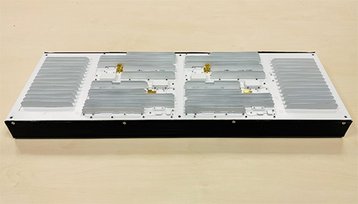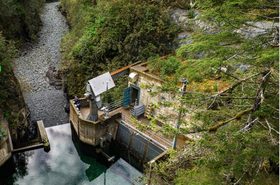SoftBank has conducted a 5G communications trial from a High Altitude Psudeosatellite (HAPS) above Rwanda.
The Government of Rwanda and SoftBank Corp. this week announced that on September 24, 2023, they successfully tested SoftBank's proprietary 5G communications payload in the stratosphere - which ranges from 4 -12 miles (6-20km) above the Earth's surface to around 31 miles (50km).
The equipment was installed on a solar-powered HAPS (also known as a High Altitude Platform Station) unmanned aerial vehicle (UAV) prototype.
The communications payload continuously delivered 5G connectivity for approximately 73 minutes in the stratosphere at a maximum altitude of 16.9km.
The flight enabled a 5G-based Zoom video call between an unmodified 5G smartphone at the test site in Rwanda and SoftBank team members in Japan.
SoftBank said the flight was the world's first publicly announced delivery of 5G connectivity from a HAPS platform in the stratosphere, following a successful trial flight in June.
Junichi Miyakawa, president & CEO of SoftBank Corp., said: “I am thrilled that our 5G payload performed in the stratosphere far beyond our expectations. This test marks an important step forward in our aim of bridging the digital divide with HAPS and other NTN solutions. We are grateful to the Government of Rwanda for their unwavering support and look forward to working with them to study use cases for commercial implementation.”
Paula Ingabire, Minister of ICT and Innovation of the Republic of Rwanda, added: “The successful 5G delivery stratospheric test we conducted is promising. It represents a significant step towards narrowing the digital divide and enhancing digital inclusion with innovative solutions.”
HAPS – whether airships, balloons, or fixed-wing drones – offer a way to provide connectivity to rural and unconnected areas without the upfront costs of cell towers or satellites or the need for specialist receivers. These unnamed drones aim to be capable of providing coverage over wide areas for months at a time.
SoftBank's subsidiary HAPSMobile Inc. and the Ministry of ICT and Innovation of Rwanda first signed a Memorandum of Understanding around HAPS development in the country in July 2020.
Following the trial, SoftBank and the Government of Rwanda will study potential HAPS use cases and commercial implementation in Rwanda, and other regions of Africa. Use cases under consideration include connecting schools and communities in rural communities without Internet connectivity.
SoftBank is in the process of absorbing HAPSMobile – set up in 2017 in conjunction with US military drone firm AeroVironment – into the company and dissolving the unit while still continuing platform development.
The company recently conducted test flights for a sub-scale model of its latest-generation HAPS platform. The current version of Sunglider, developed by HAPSMobile and AeroVironment Inc., successfully reached the stratosphere during a test flight conducted in September 2020.
SoftBank has also invested across a number of other sky-based companies; as well as HAPS, it has investments in both Low Earth Orbit (LEO) and Geosynchronous Earth Orbit (GEO) satellite firms and even aerostats (tethered blimps). The company was also an investor in Google's high-altitude Loon project – and acquired some of the unit’s patents in the wake of its closure.
Other players in the HAPS space include BAE, Airbus, Avealto, Stratospheric Platforms, Sceye, and Mira Aerospace, which completed a HAPS test flight in Rwanda over the summer.







